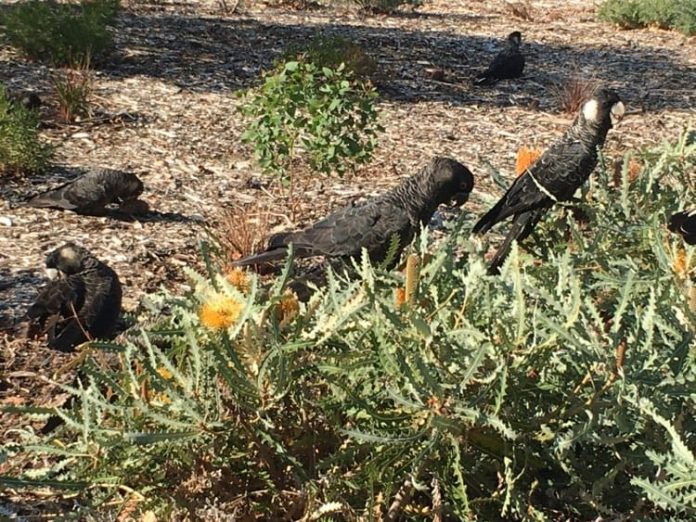
by Chilla Bulbeck
Recently Karen Majer (Have a Go News November) alerted us to the endangered status of the barking owl. As she notes, the black cockatoo is better known. But how many of us realise how close they are to an ‘extinction canyon’? Within two decades according to some predictions.
A full house at Luna Leederville on September 23 watched the world premiere of award-winning cinematographer Jane Hammond’s Black Cockatoo Crisis. Their major threat is habitat loss, including foraging, roosting and nesting sites, mostly due to rapid urban and industrial growth in the Perth-Peel region.
Black cockatoos are clever and adaptable, but wherever they go they face new dangers. As their banksia woodlands dwindled, black cockatoos found food sources in the Gnangara pine plantations. These supply up to half of all the food needed to keep the population of Carnaby’s Cockatoos alive. However, the government, fearing reduction in Perth’s drinking water, is in the process of clear-felling the plantations, to be completed within the next two years. The cockatoos will face possible starvation.
In the apple and pear orchards in Perth’s hills, Baudin’s black cockatoos are illegally shot, rather than orchardists netting their fruit trees. On our wheatbelt roads, hundreds of black cockatoos attracted to the spilled grain are killed each year, rising too slowly and awkwardly in front of vehicles. If trucks carrying grain were sealed, these deaths would be prevented.
Our northern jarrah forests have been clear-felled for bauxite mining since the 1960s. Mining companies have made application to clear a further 11,000 hectares, equivalent to around a third of the area already lost.
Endangered animals and precious forest are burned in a target-determined cookie-cutter approach to prescribed burning, when the challenges of unpredictable climate disruption require burning regimes based on local knowledge.
Environmental groups across the metropolitan area are activated when they suddenly discover their local bushland is not a ‘Bush Forever’ site, but is under threat from a private owner, Main Roads or the Western Australian Planning Commission.
Groups fighting to protect local cockatoo habitat from rezoning include the Friends of Underwood Avenue, Save Erindale Road Bushland, the Friends of Brixton Street Wetlands, Friends of Mosman Park Bushland and Cottesloe Coastcare Association.
Save the Black Cockatoos calls on the state government to protect all remaining cockatoo habitat and restore at least 30 per cent of lost cockatoo habitat by 2030 in line with UN agreements.
Each of us can do something to assist our black cockatoos. We can urge the premier to adopt the Black Cockatoo Emergency Plan (savetheblackcockatoos.com/take-action/). We can join our local bushcare group, lie down in front of bulldozers destroying remnant banksia bushland and pine plantations, or make a donation to plant trees on degraded land (Carbonpositiveaustralia.org.au).
We can urge our local council to create cockatoo habitat or plant our own gardens with banksias, or pecans, macadamias or almond trees, according to renowned botanist Kingsley Dixon.


































